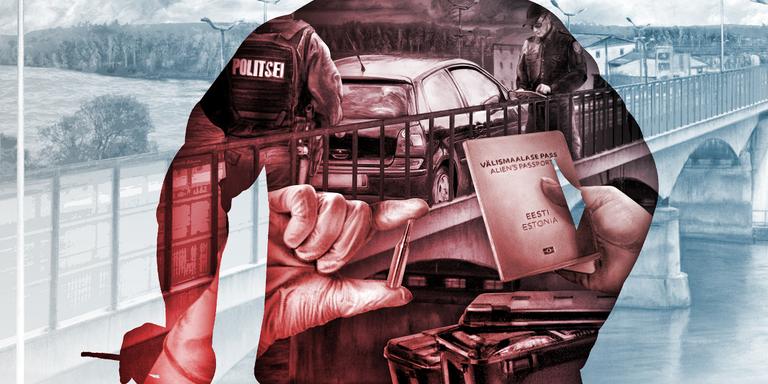


Between Estonia and Russia, across the bridge of military trafficking
Investigation'The new Russian espionage' (3/5). In Narva, an Estonian town merely separated from Russia by a single bridge, the fear of infiltration and smuggling is omnipresent. Customs and intelligence services monitor the smuggling of military equipment and technology, orchestrated by pro-Russian networks.
Tuesday, May 9. It's been almost a year and three months since Moscow set its tanks loose on Ukraine. The countries in the region are on edge, convinced that in the event of a Russian victory, their turn will come next. That morning, in Estonia, the town of Narva – population 53,000, separated from the Russian city of Ivangorod by a large river – discovered a giant screen and stage on the opposite bank: Russia was celebrating the 1945 victory over Germany, and the authorities were broadcasting films glorifying the Red Army to their neighbors in Narva. Musicians took to the stage.
On the Estonian side, spectators lined the river banks at the foot of the 13th-century Hermann fortress. Suddenly, police burst through the crowd, heading towards a group of young women wearing emblems reminiscent of the St. George ribbon. In this city, as in the rest of the country, wearing such a symbol of Russian nationalism is a way of showing support for the separatist cause and Vladimir Putin's actions. As such displays are now illegal in Estonia, the three women were taken into custody, under the indignant gaze of part of the audience.
In response to the Russian provocation, the authorities unfurled a banner on a wall of the fortress. Putin's face appeared splattered with blood and emblazoned with the slogan "Putin, war criminal." Russian border guards crossed the bridge to ask their Estonian counterparts to remove it. "It's not illegal," was the reply. The Russians turned on their heels, crossing back over a bridge that has become one of the few points of contact between the two countries, and a heavily guarded zone. Was this not where the Kremlin's troops would pass through in the event of an invasion of Estonia?
'Fifth column'
Although the country has been independent since 1991, nearly 25% of the population still speaks Russian, and Narva – 95% of whose population is Russian-speaking – is a focal point for suspicion: The authorities suspect that some of its inhabitants may be acting as a "fifth column" for the Kremlin's agenda, hence the extremely close attention paid to the – reduced but ongoing – traffic across the infamous bridge.
Most of the pedestrians who cross it are "gray passport holders", who make up a third of Estonia's Russian-speaking population. In return for being deprived of certain rights – including the right to vote at the national level – they can travel visa-free within Russia and the European Union. A few trucks, occasional agricultural equipment, as well as cars, also cross the bridge, but they have to wait longer.
You have 74.02% of this article left to read. The rest is for subscribers only.
